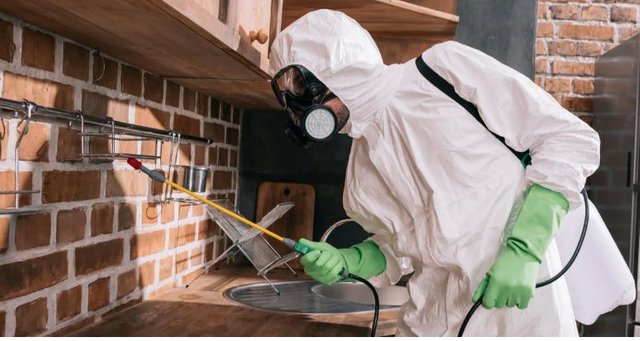The Evolution of Pest Control Techniques in Dudley: A Historical Perspective
Introduction: The Battle Against Pests in Dudley
When it comes to living in harmony with nature, the residents of Dudley, like many others, face a constant challenge: pests. These unwelcome guests, ranging from tiny insects to larger rodents, have been a part of human history since time immemorial. But what makes Dudley unique? Nestled in the heart of the West Midlands, this town has a rich history that stretches back to medieval times. With such a long timeline, you can bet that Dudley has seen its fair share of pest-related issues.

The story of pest control in Dudley is not just a tale of human versus nature; it's a narrative that intertwines with the town's own history, its industrial growth, its wars, and its technological advancements. It's a story that reflects how our methods of dealing with pests have evolved in tandem with our understanding of science, ecology, and even ethics.
In this comprehensive guide, we will explore the fascinating journey of pest control methods in Dudley, from the rudimentary techniques employed in its early history to the cutting-edge technologies used today. We'll delve into how societal changes, like the Industrial Revolution and post-war developments, have influenced pest control practices. We'll also look at how modern-day concerns such as environmental sustainability are shaping the future of pest control in the town. So, buckle up as we embark on this historical journey, examining how Dudley has managed to keep its pests in check while adapting to the ever-changing landscape of methods and ethics.
Pest Control Dudley: The Early Years
The Use of Natural Repellents: In the early days, people relied on what nature provided to keep pests at bay. Herbs like mint and lavender were commonly used. These natural repellents were not only effective but also eco-friendly. However, they were not a long-term solution, especially for larger infestations.
Traps and Physical Barriers: Another method employed during these times was the use of traps. Simple mechanisms like pitfall traps were common. Physical barriers such as fences were also used to keep larger pests like rodents away from food supplies.
The Industrial Revolution and Its Impact
Introduction of Chemicals: The Industrial Revolution brought about significant changes in many fields, including pest control. Chemicals like arsenic were introduced, offering a more effective way to deal with pests. However, these chemicals also posed health risks to humans and animals.
Technological Advancements: The Industrial Revolution also saw the advent of new technologies. Simple traps evolved into more complex mechanisms, increasing their efficiency. However, these technologies were not widely accessible due to their cost.
Post-War Period: The Rise of Pesticides
DDT and Its Aftermath: After World War II, DDT became a popular pesticide. It was highly effective but had severe environmental consequences. Its use was eventually banned, leading to the search for more sustainable methods.
Modern Pesticides: Today, we have a range of pesticides that are not only effective but also less harmful to the environment. These pesticides are the result of years of research and technological advancements.
The Digital Age: Pest Control in the 21st Century
Use of Technology: In the digital age, technology plays a significant role in pest control. From drones that can spray pesticides over large areas to apps that can identify pests, technology has made pest control more efficient than ever.
Eco-Friendly Methods: With growing awareness about environmental conservation, eco-friendly pest control methods are gaining popularity. Techniques like Integrated Pest Management (IPM) are now commonly used.
The Future of Pest Control in Dudley
Research and Development: The future looks promising with ongoing research and development in the field of pest control. New methods that are both effective and environmentally friendly are continually being developed.
Public Awareness: Public awareness is also an essential factor in the future of pest control. The more people know about the available methods and their impact, the more informed choices they can make.

Conclusion: A Journey Through Time
As we've journeyed through the annals of Dudley's history, one thing becomes abundantly clear: the field of pest control is far from static. It's a dynamic, ever-evolving discipline that reflects broader changes in society, technology, and our understanding of the natural world. From the early days when herbs and rudimentary traps were the go-to solutions, to the chemical era ushered in by the Industrial Revolution, and now to the digital age where technology and sustainability are at the forefront, Dudley has been a microcosm of global trends in pest control.
But what does the future hold? As we stand on the cusp of further technological advancements and a greater understanding of ecological balance, the next chapter in Dudley's pest control story is yet to be written. What is certain, however, is that the focus will increasingly shift towards methods that are not only effective but also environmentally responsible. Public awareness and education will play a crucial role in this transition, empowering individuals to make informed choices that benefit not just them, but also the world around them.
In closing, the history of pest control in Dudley serves as a compelling case study of how human ingenuity, adaptability, and a bit of stubbornness can overcome challenges, big and small. It's a testament to our ability to adapt and innovate in the face of adversity. And as we look to the future, it's clear that Dudley, like the rest of the world, will continue to evolve, finding new and better ways to manage the age-old problem of pests. So, here's to Dudley — a town that not only stands as a historical gem but also as a beacon pointing the way to a future of sustainable and effective pest control.